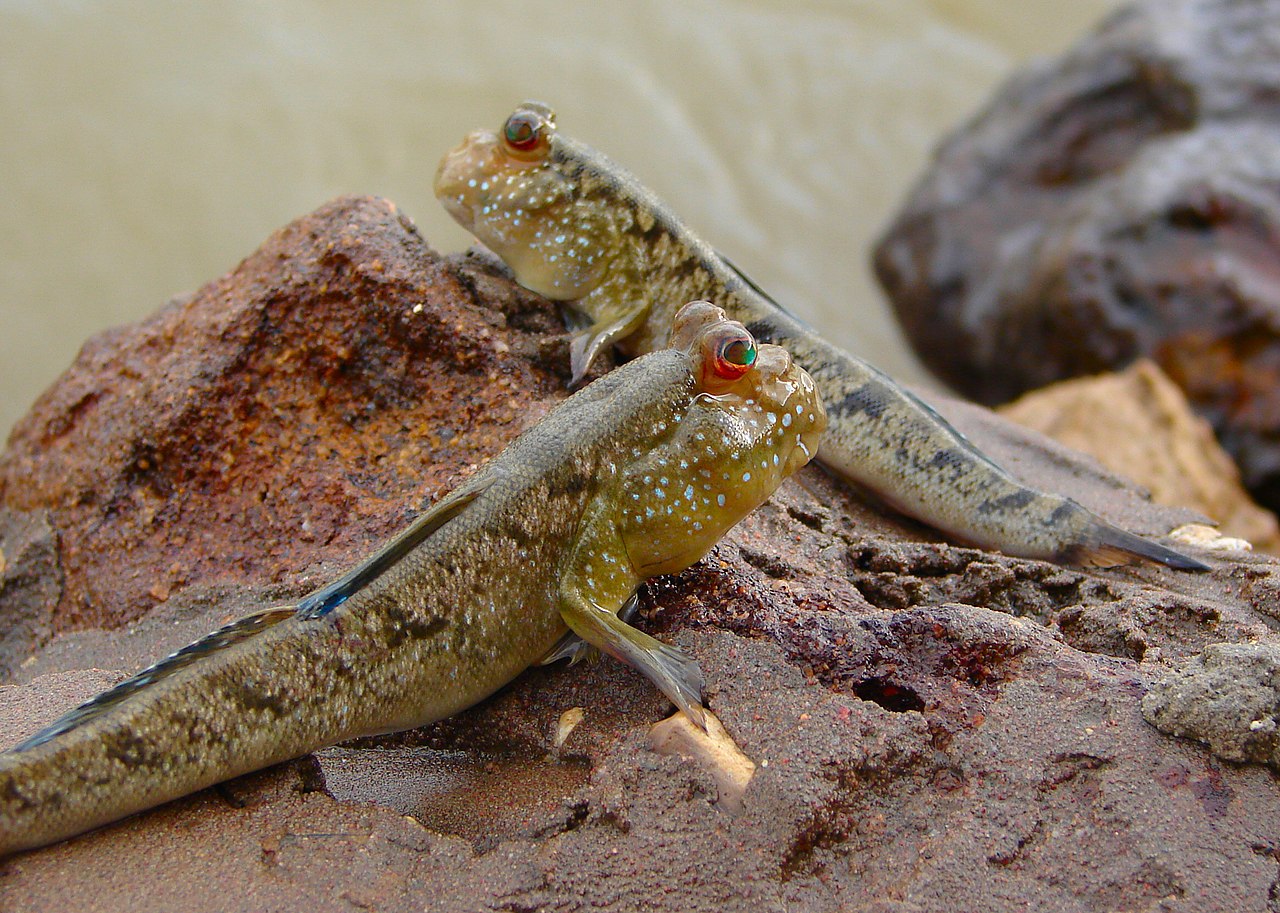It is often taken for granted that fish live in the water and stay there their whole lives; unless someone takes them out, in which case they usually die. Mudskippers, however, are a little different. There are quite a few species of mudskippers, most of which are under the category of Least Concern on the IUCN Red List. These fish, part of the goby family, can move about on land in the air. They breathe through gills, which work fine as long as they keep them wet, but they can also breathe through their skin like many amphibians (San Francisco Zoo). Their eyes are on top of their head rather than on the sides, and they walk about on their pectoral fins. This is a movement known as “crutching” for the way that they move both fins at once (as opposed to one side at a time like many bipeds and quadrupeds), and may be a modern link to understanding how animals evolved to live on land. A recent paper from the Okinawa Institute of Science and Technology in Japan studied this very adaptation: the mudskipper’s fins [Phys.org (review), Journal of Anatomy (full paper)]. The team of scientists used digital imaging to document the anatomy of the fish.
There are many factors that make life on land different from life in the water; for one, water is a much denser fluid than air. This means that its buoyancy supports the weight of many organisms, counteracting gravity and allowing them to swim around rather than dropping straight to the seafloor. There are cases where this changes to some degree, such as extremely salty water, which is denser and therefore easier for organisms to rise to the surface and float; but overall, water is much more supportive than air. This is what allows animals like blue whales to get so large. On land, however, size and structure are limited by gravity. The largest land animal, an African elephant, is much smaller than a blue whale. This is because land animals have to support their weight almost entirely with their own bones, without any help from the buoyancy of water.
The mudskipper, then, is an unusual fish, because it can move around in the air. As the study found, this means that its fins have unusual arrangements compared to other fish. Mudskippers have more muscles, and more complex muscles, than other ray-finned fishes; they also have thicker fins and a reinforced shoulder attachment. These adaptations may be similar to those of extinct transitional species that first evolved to walk on land. Therefore, not only are these fish pretty cool, they might also be able to tell us about evolutionary history.
